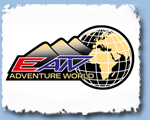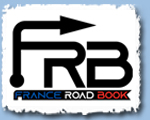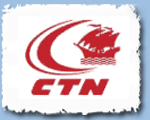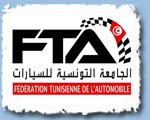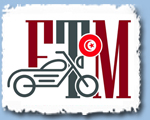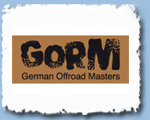Official Regulations
–> Regulations 2024 as a pdf-file for download
State: December 2023
1. GENERAL
1.1 Kind of Events
Rallye-raid-events over several days after which an overall result will be accumulated which consists of the individual results of the various race stages. The vehicles in the Adventure-Class and Discovery-Class are excluded from the race stages because they are touristic participants.
1.2 Assumption of Participation
Drivers/Teams of all nationalities with or without sports drivers-license are allowed to take part in the rallye. The drivers must hold a drivers license in accordance with the class of the vehicle they want to start with. All vehicles have to be licensed to drive on public roads and be insured. For vehicles which for the time of the rally do not comply with the StVZO (e.g. because of competition tires) a respective insurance cover has to be purchased in the port of Tunis (La Goulette). The same procedure is necessary for vehicles which have no confirmation of cover from their insurance company for Tunisia.
1.3 Language of the Event
The official language of the event is German. All important informations and publications will also be offered in English. Possible translations into other languages might be offered as an additional service but do not have any official character.
1.4 Status of Ranking
The event has no ranking status within FIA-, FIM-, DM-, EM-, WM- or other championships.
1.5 Number of Participants and Classification
All drivers/teams that have registered in time are permitted to start independent from the overall number of participants. The refusal of late-registrators is subject to the decision of the organizer. The requirement for a ranking in an individual class is the participation of at least three vehicles per class. Are there less than three vehicles registered in a class, classes may be combined for consolidated ranking.
1.6 Registration
The registration of vehicle, driver, co-driver and staff is effected as a registration-order by filling in the online-registration-form. The registration-order will be given by transmitting the online-registration-form. The deadline for the end of registration as well as the registration-fees are to be found in the rally-tender. In case of cancellation by the participant the registration-fee will be refunded on a pro rata basis in accordance with the AGB. In case the event will be cancelled the registration fees will be refunded by 100%. The registration is valid when the registration-form and the registration-fee have arrived. This will be confirmed in writing. If the entry fee or the individual agreed installments of the entry fee is not paid in due time (see announcement), the difference to the then applicable higher entry fee will be recalculated and the processing of the entry order will be suspended until payment.
Participants of less than 18 years of age need a written formless permission signed by their legal guardian.
1.7 Disclaimer
All participants declare with a special note in the online-formular that they will absolve the organizer and his staff, any authorities, companies or individuals, which supply routes or approve these, from all claims for indemnity resulting from damages and accidents in connection with the event. This also applies for eventually caused damages by accomplishments arranged by the organizer but carried out by third parties (sweeper truck, technical service, fuel service and alike). This renounce does not apply in cases of intent and gross negligence and for property and/or personal insurances. Each participant has the possibility to omit single stages or parts of these and accepts that the participation is on his own risk.
1.8 Liability of the Participants
The participants and vehicle-owners respectively their vehicle-insurance-companies are liable for eventually caused damages. Excepted from this liability are damages caused to the vehicles of other participants during race stages except an intention can be proven. They are also liable, in cases of doubt driver, co-driver and vehicle-owner joint and several, for costs being generated in addition for the organizer during the course of the rally by e.g. search activities, rescue-flights (at the time being 80 € per person and flight-minute) vehicle salvaging and such.
1.9 General Rules of Conduct
All written and verbal information and orders of the organization-staff respectively of the organizer and his representatives have to be followed categorical. This is valid for the complete duration of the event and the journey to and from the rally.
The rally-routes are approved by the authorities but consist mainly of public roads or pists, which can not be closed off.
The route has to be viewed and speed has to be selected in a way that the vehicle can always be halted safely. Should, as an exception, a race-route be planned through a populated area speed limits have to be kept strictly to avoid any endangerment of persons. Of course this also applies for transfer-stages. The applicable traffic regulations must be observed strictly!
Following violations can be punished with time- or monetary fines or disqualification from the ranking:
- Non-observance of the time for technical scrutineering and registration
- Non-participation in announced driver’s briefing
- Endangerment of inhabitants, participants or rally-staff outside the competition route by reckless driving or inadequate speed
- Driving under influence of alcohol or drugs
- disregarding for the installation or using regulations of the tracking system
- Intentional damage or switch off the GPS recorder
- Non-compliance of directives given by the ORGA (Organization, Rally-staff)
- Non-compliance of environmental sanctions (see point 4)
1.10 Advertisement and Starting-Numbers
The advertisement of the event-sponsors supplied by the organizer has to be attached free of charge to all vehicles in accordance with the sticker-plan. The stickers have to be attached durable and clearly visible. In the respective classes the following spaces have to be reserved additional for starting numbers: E1, E3, Q1, Q2, T3 right, left and front 20 x 20 cm each; T1, T2, T4.1, T4.2, RC, AC, DC right and left 40×40 cm each and on windscreen and rear-bumper 12 x 12 cm. Non-compliance with the advertisement rules can cause the disqualification from ranking.
The release from the mandatory advertisement (not starting-number placards) is possible against payment of a lump sum after consultation.
2. EXECUTION, ROUTES, SAFETY, CONTROL AREAS, GPS, RANKING, RESULTS, SALVAGE
2.1 Execution of Race-Stages
2.1.1 General
The special stages can be driven as distance-race or a circuit-race with one or several laps. Single- group- or mass-starts are possible. Driver and co-driver may take turns provided the co-driver also holds an appropriate drivers license. The driver is also permitted to start without co-driver. An exchange of the vehicle is not permitted for the complete duration of the rally.
Transportation of competition vehicles on transfer sections between special stages is not allowed.
2.1.2 Safety check
All participants have to appear 15 min ahead of their individual starting time at the pre-start check area in starting order. Here the driving-safety of the car, the driving-capability of the driver, the availability of safety equipment, the ammount of beverages and emergency rations will be checked. In addition, the proper function of the tracking system and GPS recorder will be examined.
Participants under the influence of alcohol or drugs will not be permitted to start as well as vehicles without sufficient safety equipment or in a non-safe technical condition.
2.1.3 Start
When safety check has been carried out the participants have to line up at the beginning of the starting area in the proper starting sequence. Here the starting time will be entered by the ORGA-staff in the time cards. These have to be prepared by the participant in advance by filling in name and starting-number. On order the starting area may be entered. At the starting line the vehicle will be started by a countdown. From here on driving with light is mandatory. Wearing a helmet and applying of safety harnesses is mandatory. For E1, E3, Q1 and Q2 wearing a helmet is mandatory at all times when driving.
Participants who drive into the race-stage without starting permit act grossly negligent. As they do not appear on the participants-list they will not be expected at any checkpoints or at the finish-control and in case of doubt will not be missed.
2.1.4 Starting order
- prologue or SS1, if no prologue will be held – the sequence of starting numbers, but T1 before T2
- each first special stage of the day – according to the current overall result
2.2 Routing, Safety Regulations and Control Areas on Race-Stages
2.2.1 Routing
The obligatory rally-itinerary is to be found in form of a distance-log with roadbook-signs and GPS-coordinates in the roadbook. Distances in the dunes may be given as straight line-distance “as the crow flies”.
GPS-coordinates will be transferred to the participants by data-transfer. They should match with the coordinates in the road book. If not, the digitally transferred coordinates are binding.
The GPS-coordinates inside the special stage, displayed in the roadbook, have to be hit in any case. An approach of at least 50 m is required for „waypoint hit“.
For determining compliance with the specified routes “hidden way points” are introduced. This HWP (hidden way point) are not listed in the road book. The HWP-coordinates always correspond with a clear and accurate reachable roadbook picture. HWP’s will be used only on clearly identifiable pistes, paths or roads. An Approximation to a minimum of 50 m means “HWP reached”. An exception are the HWP(D). They are located in the dunes, always at the end of a compass course. They are not listed in the road book. An Approximation to a minimum of 300 m means “HWP(D) reached”. The check of the absolved track is performed by electronic evaluation of the GPS logger.
In case a participant has lost the track he has to drive back in his own track to the last definitely identified roadbook-sign until orientation is re-established. By doing so it has to be observed that the rally-track never may be driven in the opposite direction for safety reasons.
Due to environmental changes or other reasons not all danger spots can be marked in the roadbook. Also broken down/crashed vehicles of participants, other vehicles, persons or animals may be in the track. Therefore the route has to be viewed. The driver must be able to avoid obstructions or bring his vehicle to a halt early enough.
The adherence of speed limits, displayed in the roadbook, will be checked. It will be checked between the first and the last marked road book picture. The check of the completed track is performed by electronic evaluation of the GPS logger.
The leaving of the rally-itinerary is prohibited. By doing so participants act grossly negligent and absolve the organizer from his custodial care.
2.2.2 Safety Instructions
In case of a vehicle breakdown oncoming participants have to be warned. This is especially importand in the dunes to avoid rear-end-collisions and should be done by e.g. positioning the sandboards in an upright position or the emergency-flash-signal on an elevated spot.
The driver or other inmates of the damaged vehicle signals to the following participants with a hand signal (thumbs down) that help is needed or (thumbs up) that no help is needed.
The following participant is obligated to pass on information about accidents, technical breakdowns and other cases of emergency to the ORGA at the next CP (DK) or at the Finish Control (ZK). For that purpose the respective GPS-coordinates have to be put down.
The respective buttons on the tracking-systems have to be pressed immediately in case of a medical emergency and in case of a technical problem after investigation whether help by the ORGA is necessary. Should it turn out in the further course of the incident that medical assistance or help by the ORGA is no longer necessary, the vehicle may only leave its position when the alarm has been deleted in the tracking-system by pressing the “OK”-button.
For signalling emergencies, in addition red signal-rockets have to be fired vertically after dark. 3 rockets should be fired in 5 minute intervals on the full hour. The use of satellite-phones is optional.
It is absolutely mandatory that participants stay with the disabled vehicle. Leaving the position is grossly negligent and absolves the organizer from his custodial care. It also can cause assistance or salvage-actions to be carried out only with delay.
2.2.3 Assistance
Assistance between participants is permitted. In cases of emergency, especially in medical emergencies help is mandatory. For medical help time-credits may be given on demand by the sport court.
2.3 Control Areas
2.3.1 Passage controls (CP or DK)
Passage controls will always be located on a GPS-coordinate noted in the roadbook. The CP might be marked in the roadbook as such. In any case the amount and positions (in a dune-area or not) of the CP´s will be communicated at the drivers briefing. The beginning of a CP-area is marked by a yellow placard. Here speed has to be reduced to 30 km/h. At the red placard the time card has to be presented for stamping. For vehicle that approach a CP from the wrong direction the CP will be counted as “Omitted = not reached”.
For omitted = not reached CP´s time-penalties will be issued.
2.3.2 Passage controls with time keeping (CPexit)
The CPexit will always be located on a GPS-coordinate noted in the roadbook. The CPexit is marked in the roadbook as such. The beginning of a CP-area is marked by a yellow placard. Here speed has to be reduced to 30 km/h. At the red placard the time card has to be presented for stamping and fill in time stamp. For CPexit a TTC is specified. To continue the special stage after CPexit, the CP must be reached in personal target time (start time + TTC). If the TTC is exceeded, the special stage is finished for this participants. For vehicles that approach a CP from the wrong direction the CP will be counted as “Omitted = not reached”. The same applies for vehicles which reach a CP after their individual allowed time (individual starting-time + VGZ) has elapsed. These vehicles will finish the race-stage at the CPexit and follow the orders of the rally-staff. After the allowed time (VGZ) for the last starter has elapsed the CP will be closed.
For omitted = not reached CP´s time-penalties will be issued.
2.3.3 Time Controls (ZK)
Time controls are always established at the end of a race-stage. They are always noted in the roadbook. For every ZK a VGZ is given. The beginning of a ZK-area is marked by a yellow placard. Here speed has to be reduced to 30 km/h. The time-check will take place at the yellow placard. Beyond the red placard the vehicle has to be stopped. The GPS logger is readout. Afterwards the board-card has to be handed to the ZK-staff for fill in the arrival-time. In return the participant receives the new roadbook. After the allowed time (VGZ) for the last started vehicle has elapsed, the ZK will be closed. For vehicles that approach a ZK from the wrong direction the ZK will be counted as “omitted = not reached”. The same applies for vehicles which reach a ZK after their individual allowed time (individual starting-time + VGZ) has elapsed. Participants who cancel a special stage before reaching the ZK must in all cases immediately visit the ZK staff, hand over their board-card and have the GPS recorder read out. If the ZK is no longer occupied after expiry of the VGZ, the participant must report immediately to the EXPLONA staff or the race director in the paddock. That enables a fast evaluation and avoids unnecessary search activities. Participants who failing to report back act grossly negligent and have in case of doubt to burden the costs for any search and rescue activities.
For omitted = not reached ZK´s time-penalties will be issued.
2.4 Use of GPS, Evaluation and Results
2.4.1 Use of GPS-devices (Global Positioning System)
Each vehicle has to be equipped with a personally GPS-device. GPS-coordinates noted in the roadbook have to be approached minimum to a radius of 50 m by the participants.
Each vehicle is equipped by the organizer with a GPS recorder. At each stage finish line, these devices will be read. If the recorded track can not be read, because of loss, destruction or other reasons, time penalties will be given.
For each not reached waypoint also time-penalties will be issued.
2.4.2 Evaluation of the Participants after a race-Stage
Each participant who reaches the ZK in time will have his arrival time entered in the time-card. In case two ore more participants arrive with a distance of 10m or less between them the arrival time for those will be identical. From the starting-time and the arrival-time the time of driving (FZ) will be calculated. Eventual time-penalties will be added, time-credits will be deducted. The result is the ranking-time (WZ). Participants who did not start or have failed respectively have aborted a stage will be ranked on basis of the LTFZ (Time of the slowest participant arriving within the allowed time.
The participant with the shortest WZ is the winner of the stage.
2.4.3 Results
After each race-stage the results will be posted as preliminary results. From the time of posting on, there is a time limit of appeal of one hour. Will there be no appeal (Protest) the results will become final automatically.
All ranking-times of each participant -the ranking time of the prologue excluded- will be added daily and display the intermediate result of the overall-ranking. After completion of the last race-stage the participant with the shortest overall-time is the overall-winner of the rally. The winners of the individual classes will be evaluated in accordance.
2.4.4 Recovery of vehicles
- Competition cars always take precedence over AC, service or other participants
- The decision, if a vehicle must be loaded or can be towed, is always decision of the ORGA.
- Participants that have been recovered because of fatigue or lack of physical fitness, can be excluded from further special stages or parts of stages by the race director.
- Participants who request the “sweeper truck” without technical failure or accident, due to missing or defective equipment or due to breakdowns that could be eliminated with available materials, will be contribute to the costs. (depending on time and distance)
- The same applies to salvage far away of the road book route.
- In case of several upcoming salvages, the race director decides following logistical considerations and in accordance with the smooth continuation of the event, in what order.
3. CLASSIFICATION, PERMISSIBLE TECHNICAL CHANGES, SAFETY REQUIREMENTS, OBLIGATORY EQUIPMENT
3.1 Classification and Requirements
3.1.1 E1 / Enduro
- without special technical requirements
- safety requirements acc. to 3.3: 2;3;5
- safety recommendation acc. to 3.3: 4
- obligatory & emergency equipment acc. to 3.4: 1;3;4;5;9;10;11;12;13;14;15;16
3.1.2 E3 / Enduro with sidecars
- without special technical requirements
- safety requirements acc. to 3.3: 2;3;5
- safety recommendation acc. to 3.3: 4
- obligatory & emergency equipment acc. to 3.4: 1;3;4;5;9;10;11;12;13;14;15;16
3.1.3 Q1 / ATV (4×4)
- without special technical requirements
- safety requirements acc. to 3.3: 2;3;5
- safety recommendation acc. to 3.3: 4
- obligatory & emergency equipment acc. to 3.4: 1;3;4;5;9;10;11;12;13;14;15;16
3.1.4 Q2 / Quad (2×4)
- without special technical requirements
- safety requirements acc. to 3.3: 2;3;5
- safety recommendation acc. to 3.3: 4
- obligatory & emergency equipment acc. to 3.4: 1;3;4;5; 9;10;11;12;13;14;15;16
3.1.5 T3 / Buggies/UTV/SSV (2×4 und 4×4) – max. empty weight: 999 kg
- without special technical requirements
- safety requirements acc. to 3.3: 1;3;6;8;11;12;17;21;24;25;26
- safety recommendation acc. to 3.3: 4;9;16
- obligatory & emergency equipment acc. to 3.4: 1;3;4;5;6;7;9;10;11;12;13;14;15;16
3.1.6 T2 / 4×4 Cars (production cars) min. 5.000 pieces produced / empty weight: 1.000 – 3.499 kg / max. wide: 210 cm
- permissible tech. modifications acc. to 3.2: 1;2;3;5;6;8;9;10;12;13;14;15;16;17;18;19
- safety requirements acc. to 3.3: 1;3;6;8;11;13;18;21;22;23;25;26
- safety recommendation acc. to 3.3: 4;9;14;15;16;19
- obligatory & emergency equipment acc. to 3.4: 2;3;4;5;6;7;8;9;10;11;12;13;14;15;16
3.1.7 T1 / 4×4 Cars (prototypes) + 2×4 Buggies / empty weight: 1.000 – 3.499 kg / max. wide: 230 cm
- permissible tech. modifications acc. to 3.2: 1;2;3;4;5;6;7;8;9;10;11;12;13;14;15;16;17;18;19;20;21;22;23;24
- safety requirements acc. to 3.3: 1;3;6;9;11;15;18; 21;22;23;25;26
- safety recommendation acc. to 3.3: 4;16;19
- obligatory & emergency equipment acc. to 3.4: 2;3;4;5;6;7;8;9;10;11;12;13;14;15;16
3.1.8 CH / 4×4 Autos + 2×4 Buggies (historical cars) / empty weigt: 1.000 – 3.499 kg / max. wide: 230 cm / produced before 1990 *
- permissible tech. modifications acc. to 3.2: 1;2;3;4;5;6;7;8;9;10;11;12;13;14;15;16;17;18;19;20;21;22;23;24
- safety requirements acc. to 3.3: 1;3;6;7;10;13;18; 21;22;25;26
- safety recommendation acc. to 3.3: 4;8;9;11;14;15;16;19
- obligatory & emergency equipment acc. to 3.4: 2;3;4;5;6;7;8;9;10;11;12;13;14;15;16
3.1.9 T4.1 / Trucks up to 7,499 kg empty weight / min. empty weight: 3.500 kg / max. wide: 250 cm
- without special technical requirements
- safety requirements acc. to 3.3: 1;3;6;8;11;12;18;20;21;22;25;26
- safety recommendation acc. to 3.3: 4;9;16;19
- obligatory & emergency equipment acc. to 3.4: 2;3;4;5;6;7;8;9;10;11;12;13;14;15;16
3.1.10 T4.2 / Trucks from 7,500 kg empty weight / max. wide: 250 cm
- without special technical requirements
- safety requirements acc. to 3.3: 1;3;6;8;11;12;18;20;21;22;25;26
- safety recommendation acc. to 3.3: 4;9;16;19
- obligatory & emergency equipment acc. to 3.4: 2;3;4;5;6;7;8;9;10;11;12;13;14;15;16
3.1.11 RC / 4×4 Cars (Raid Class) / empty weight: 800 – 3.499 kg / max. wide: 210 cm
- without special technical requirements
- safety requirements acc. to 3.3: 1;6;10
- safety recommendation acc. to 3.3: 3;7;11;17;26
- obligatory & emergency equipment acc. to 3.4: 2;3;4;5;6;7;8;9;10;11;12;13;14;15;16
3.1.12 AC / Adventure Class – UTV, 4×4 Cars, Trucks up to 7.5t (incl. historical vehicles)
- without special technical requirements
- safety requirements acc. to 3.3: 6;10
- obligatory & emergency equipment acc. to 3.4: 2;5;6;7;11;12;13;14
3.1.13 DC / Discovery Class – UTV, 4×4 Cars, Trucks up to 7.5t (incl. historical vehicles)
- without special technical requirements
- safety requirements acc. to 3.3: 6;10
- obligatory & emergency equipment acc. to 3.4: 2;5;6;7;11;12;13;14
In the vehicle classes T2 and T1, in addition to vehicles with combustion engines, vehicles with alternative drives (hybrid / battery-electric / fuel cell) are expressly permitted from 2022, provided they meet the regulations of the respective vehicle class in all other points.
* The following assemblies (include the permissible techn. modifications) must have been identical purchasable already before 01/01/1990: engine, turbo-charger, gearbox, axles, chassis (springs/dampers). In case of doubt, especially in the case of special conversions, the proof must be provided by the team
3.2 Technical Alterations
- modified shocks in series dimensions, at unchanged fixing points
- modified springs, with unchanged spring mounting points
- special shocks, or shocks with outside oil reservoir at original mounting points
- double shock absorber systems, first shock absorber at original mounting points, second not larger as the first
- reinforcement of the original mounting points of the shocks without altering their position
- reinforcement of the original spring retainers without changing their position
- changed spring retainer and shock absorber fixing (increase spring travel)
- wheel Spacers with EC type approval or entered in the vehicle license
- changed tire/rim size, road legal (acc. to ETRO standard), entered in the vehicle license or certificate for this special car
- changed tire/rim size, road legal (acc. to ETRO standard)
- special competition tires
- replacement of rear side windows and / or rear window by other materials
- removal of the sky and carpet, removal of interior linings from the B-pillar backwards, removal of the rear seats
- replacement of steering wheel
- modified front bumper, modified rear bumper, at unchanged fixing points
- switching off airbag, ABS, ESP or comparable systems
- changed engine and / or gearbox (both at least 500 times as standard delivered in this vehicle model)
- improved engine-performance
- installation of additional tanks
- body-parts in serial dimensions made of GRP, carbon or other special materials
- modified body work / special components
- special construction (axles, suspension, brakes, gearboxes, additional aggregates, etc.), individual productions (lattice frame or similar)
- Macrolon window panes
- tire-pressure regulation installations
All not described alterations are not allowed. In case of doubt contact organizer in advance
3.3 Safety Requirements
- obligation of wearing helmets during competition
- obligation of wearing helmets in general
- helmets according to ECE-norm
- helmets according to FIA-standard
- Enduro-specific protectors for chest, shoulder and back, gloves and boots
- obligation of applying safety belts in general
- 3-point harnesses-belt
- 3- or 4-point harness-belt
- 5- or 6-point harness-belt
- seat with head-rest
- bucket seats
- vehicle-specific roll cage (minimum requirement: 4-point, roof cross)
- 4-point roll cage (minimum requirement: roll bar on A- and B-pillars, connected along the roof frame, H-bar in the main bracket, roof diagonal bar)
- 4-point roll cage (minimum requirement: roll bar on A- and B-pillars, connected along the roof frame, H-bar in the main bracket, roof cross, flank protection)
- 6-point roll cage (minimum requirement: roll bar on A- and B-pillars, connected along the roof frame, rear support bars, cross in the main bracket, roof cross, flank protection)
- roll cage as a welded safety cell
- one fire-extinguisher in the interior (min 2Kg)
- two fire-extinguisher in the interior (min 2Kg)
- FIA-homologized fire-extinguishing system + one fire-extinguisher in the interior (min 2Kg)
- additional safeguard against unintentional tilting of tiltable drivers-cabins
- adequate wheel-covers (wings)
- mud-flaps at the rear-axle (wide: min. as the tire, length: min. down to the wheel middle)
- FIA-homologized flame-resistant drivers-clothing according to point 3.5.2
- FIA-homologized flame-resistant drivers-clothing
- emergency switch off for electric system and engine (for diesel vehicles if necessary mechanically) marked by a „Lightning“-sign
- towing eyes/hooks front and rear, marked with red arrow
3.4 Obligatory- and Emergency Equipment
- Fuel for a minimal range of 150 km
- Fuel for a minimal range of 300 km
- GPS-device
- Tripmaster
- on-board tool-set
- towing rope corresponding to the vehicle weight including fastening material (min. length: 9 m)
- minimum one sand shovel
- sandboards
- signal rockets, minimum nine cartriges „red“
- emergency flash-signal
- reflecting insulation-blanket
- minimum 1,5 l beverages per person
- first aid kit / emergency rations for minimum one day
- mounting-Kit for Explona-Tracking-Box
- mounting-Kit for GPS-Logger
3.5 General safety requirements
3.5.1 Fuel tanks
If fuel tanks installed in the vehicle interior of the classes T2, T1 or CH an impermeable and non-flammable partition must be installed to separate the tank from the actual passenger compartment. This is not valid, if FIA-homologated safety tanks are used, provided that all of the elements (the filler neck, fuel lines and air valve) are matching with this homologation. In doubt, the driver/team must prove it at scrutineering.
3.5.2 Driver clothes
In the vehicle category T3 flame-resistant driver clothing with FIA-homologation is required. The same applies to the vehicles described in 3.5.1, if the stated rules for example for pickups or convertible models can not be met.
3.5.3 Vehicle batteries
The battery poles must be protected always and in all classes with appropriate cover. If the vehicle battery is installed in the interior, it must be done in a liquid-tight, acid and impact-resistant container of plastic or other non-conductive material with appropriately secure fixings.
3.5.4 Vehicle interior
Transportation of fuel canisters or other containers with fuel is not permitted.
All in the interior carried items such as spare wheels, tools, first aid kit, fire extinguisher, etc. should be fastened with sufficiently dimensioned brackets so that they can move under no circumstances (accident, rollover).
3.5.5 Fire extinguisher in case of accident / rollover
If driver / co-driver leave the vehicle after an accident or rollover, the on-board fire extinguisher should be taken by them to fight a fire from outside if necessary.
3.5.6 Additional lights
Only auxiliary headlights with permission for legal road use (fog or long-distance lights) may be used in the front. Additional headlights are to be installed in pairs. In classes Q1 and Q2 so-called “light bars” may also be used individually. Proof of the admission to legal road use is to be provided by the participant in case of doubt.
For special stages with increased dust development or in the dark, one or two red flashing lights (60-120x per min) must be used on the vehicle tail. These must work permanently (even when the vehicle is switched off).
4. ENVIRONMENTAL PROTECTION
It has to be monitored that in extreme situations (roll-over) no fuel or oil can leak out. The fuel-tanks and the oil sump have to be protected against external damages (Underride guard). Filler-caps have to be replaced eventually by srew-on caps.
Vehicle repair may only take place at the designated areas. Doing so the vehicle has to be placed on a large scale, fuel resistant component (tarpaulin). Accumulating harmful substances have to be collected and have to be disposed of at the technical service.
Non-compliance of the environmental specifications may have the consequence of disqualification from the event.
5. REGITRATION, TECHN. SCRUTINEERING, DEVICE MOUNTING
5.1 Generally
The registration of the teams and the presentation of the vehicles to the techn. scrutineering is compulsory and must be carried out at the specified time. The checking staff and the EXPLONA staff must get unimpeded access to the vehicles. If necessary, the vehicles must be unloaded. The mounting kits for the EXPLONA tracking system and the GPS logger must be installed according to the installation instructions at the time of the techn. scrutineering.
The teams have the option to select the time of registration and scrutineering for each competition vehicle within a given frame in the entry form.
For teams, not coming with the rally from Genoa, registration, technical scrutineering and equipment installation will be done on the evening before the start of the rally.
5.2 Docket
Each team is equipped with a docket “What’s to do”. This document must be submitted and stamped at all tasks to be performed by the participants, such as paper acceptance and technical scrutineering, passport formalities, etc. The driver or the team is responsible for the completeness of the entries on the docket.
5.3 Document-Check
Before the race starts, start-numbers, the event-advertisement and the actual information of the ORGA will be handed out to all drivers/teams. In this moment all drivers have to present their valid drivers-license unrequested. Co-drivers under 18 years of age present the formless permission by their legal guards. Beyond that each vehicle owner or his representative have to present the proof of a valid vehicle insurance on demand of the race director.
5.4 Technical Scrutineering
At the scrutineering it will be checked whether the respective vehicle has been registered in the proper class in accordance with the technical requirements. Besides that the compliance with the safety- and environment protection rules will be checked. The placing of the start-number and the mandatory advertisement will be checked. The proper installation of the mounting kits is also checked.
During the scrutineering all teams have the chance to examine the vehicles of the competitors. On demand insight into the engine compartment has to be allowed.
5.5 Device installation
Following the technical scrutineering, all competition vehicles will be equipped with the EXPLONA tracking system.
6. PROTESTS
6.1 General
Protests have to be filed as a basic principle in writing at the race-director. Each protest may contain only one complaint and may be filed only by one team.
6.2 Admission of Protest
Only participants registered for the respective class have the right to protest.
6.3 Costs of Protest
For protests in technical matters and against the classification the amount of 250 € have to be attached. For protests against the ranking there will be no charge. In case the protest is successful the charge will be refunded. In case the protest is lost, the protesting party has to pay the charge to the organizer and is responsible for all additional costs arising from that action.
6.4 Types of Protest
6.4.1 Protests against classification and in technical matters
Protest against the classification of a vehicle have to be filed in writing until latest 1 h after end of scrutineering at the race director. After expiry of this deadline a protest against the classification may only be filed in well-founded exceptional cases.
Before the begin of any eventual dismantling the amount for doing so, which will be decided by the race director, has to be deposited by the protesting team. In case the protest was entitled the costs will be refunded.
6.4.2 Protests against time measurement
Protests against time measurement or because of faulty stamps in the time-card have to be filed latest until 30 min after the end of the special stage.
6.4.3 Protests against ranking
Protests against ranking, time-penalties or the daily or overall-result (eventually calculation- or transmission errors) have to be filed until latest 60 min after the results have been poste.
6.5 Deadlines of protest
After elapse of the respective deadline no more protests are admissible.
6.6 Protest decisions
All protests will be decided by the court of arbitration consisting out of the race director and at least 2 members of the ORGA.
6.7 Appeal
Against a spoken out decision no appeal can be filed.
SUMMARY OF PENALTY-TIMES
Late start or to late at the pre start check point
10 min. penalty-time for each commenced minute of delay
Nonstart / not permitted to start
LTFZ + 5h (WP-penalty-times) + all DK- / ZK-penalty-times + 2h
Loss of board-card, DK-proof possible by DK-lists
1h penalty-time
Loss of board-card, DK-proof not possible by DK-lists
LTFZ + 5h (WP-penalty-times) + all DK- / ZK-penalty-times + 1h
Read-out of GPS-recorder not possible
LTFZ + 5h (WP-penalty-times) + all DK- / ZK-penalty-times + 1h
Speed limit exceeded
15 min. penalty-time per transgression
WP omitted (not reached)
30 min. penalty-time per WP (max. 5h)
HWP / HWP(D) omitted (not reached)
10 min. penalty-time per HWP (max. 5h)
DK omitted (not reached)
1h penalty-time
DK in the dunes omitted (not reached)
3h penalty-time
CPexit – TTC exceeded / voluntary exit
own FZ to CPexit + LTFZ part II + penalty-times for missed WP (max. 5h) / HWP (max. 2h) / DK + 1h (ZK-penalty-time)
DK – VGZ exceeded
LTFZ + penalty-times for missed WP (max. 5h) / HWP (max. 2h) / DK + 1h (ZK-penalty-time)
ZK omitted / not reached within VGZ
LTFZ + penalty-times for missed WP (max. 5h) / HWP (max. 2h) / DK + 1h (ZK-penalty-time)
More than 10 WP omitted
LTFZ + 5h (WP-Penalty-times) + penalty-times for missed HWP (max. 2h) / DK + 1h (ZK-penalty-time)
Salvaged by sweeper truck
LTFZ + penalty-times for missed WP (max. 5h) / HWP (max. 2h) / DK / ZK + 1h
Assistance by ORGA or Service
1h penalty-time per assistance
Translation and explanation of important abbreviations used above
CPexit . Passage control with time check … point of decision to continue or cancel
DK …… Passage-control or Check-Point (CP) … one or more DK´s per race-stage
FZ ……. Driving-time … Difference between start-and finish-line time (Arrival-time)
LTFZ .. Slowest participants driving-time – Driving time of the slowest participants within the time limit
VGZ …. Time-limit … Time limit when a DK or the ZK has to be reached at latest
TTC …. Time to continue … Time limit to reach the CPexit to continue the special stage
WP ..… Waypoint … GPS-way point according to the road book
HWP … hidden way point … hidden GPS-way point, not shown in the road book
HWP(D) … hidden way point dunes … hidden GPS-way point, not shown in the road book
WZ …… Ranking-time … Driving-time of a participant plus or minus time-penalties or time-credits
ZK ……. Time-Control … Time-measurement at the end of a race-stage






